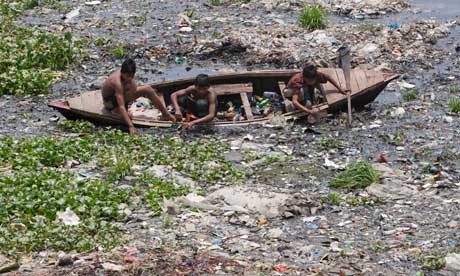As preparations intensified worldwide for COP 21 in Paris, a new publication titled Guide to INDCs that provides practical guidance to Least Developed Countries (LDCs) on how to prepare their Intended Nationally Determined Contributions (INDCs) for the United Nations Framework Convention on Climate Change (UNFCCC) has been released. The guide is a joint publication of The Climate and Development Knowledge Network (CDKN) and Ricardo-AEA Ricardo-AEA.

The INDCs are essentially the building blocks for the 21st Conference of the Parties in Paris where the targets will hopefully be agreed and solidified. At this stage of the negotiations procedure other countries are expected to follow suit and submit their INDCs ahead of Paris 2015.
The UNFCCC has invited all Parties to communicate to the secretariat their INDCs “well in advance of COP 21” and it will prepare by 1 November 2015 a synthesis report on the “aggregate effect of the INDCs” that have been submitted before 1 October.
LDCs have contributed less to current global emissions than other countries; so the burden of cutting emissions will rest with major economies. However, to avoid dangerous levels of global warming, all countries will have to play a role, and the UN has communicated that LDC contributions towards a global agreement should “reflect their special circumstances”.
At present, there is no formal, standard template for INDCs. A statement by CDKN stated that the guide was initiated at the request of some LDCs for practical guidance, tailored to their needs. As such it seeks to address the broad range of approaches being considered by LDCs in preparing their INDCs, including the challenges they face and different national circumstances and levels of capacity, preparedness and ambition, the statement said.
“While many of the LDCs we work with are keen to show their commitment to a global ambitious deal on climate change, many are struggling to put together their national contribution as the current guidance is insufficiently detailed,” said Kiran Sura, CDKN’s Head of Advocacy Fund for Negotiations Support. “We hope this guidance and template, built from CDKN and Ricardo-AEAs experience of supporting LDCs over many years, will be a useful tool to help bridge this gap.”
The Guide to INDCs provides a practical example of how an INDC could be structured, with examples to illustrate a narrative and sources of background information.
CDKN makes it clear that the Guide to INDCs is not an official publication of the UNFCCC, nor is it endorsed by the UNFCCC, but stressed that it was developed in consultation with a range of stakeholders, including authors of existing INDC guidance, representatives from LDCs, and organisations working with CDKN to support INDC preparations. It draws from the INDCs which have already been submitted, and a range of referenced literature.
“This guide seeks to address the broad range of approaches being considered by LDCs in preparing their INDCs, including the challenges they face and different national circumstances and levels of capacity, preparedness and ambition. The guide responds to requests from LDC governments for suitable guidelines,” the CDKN statement said.
CDKN aims to help decision-makers in developing countries design and deliver climate compatible development while Ricardo-AEA is a global sustainability consultancy.
The guide can be accessed here: http://cdkn.org/wp-content/uploads/2015/04/CDKN-Ricardo-AEA-Guide-to-INDCs_FINAL_WEB.pdf
By Arison Tamfu
